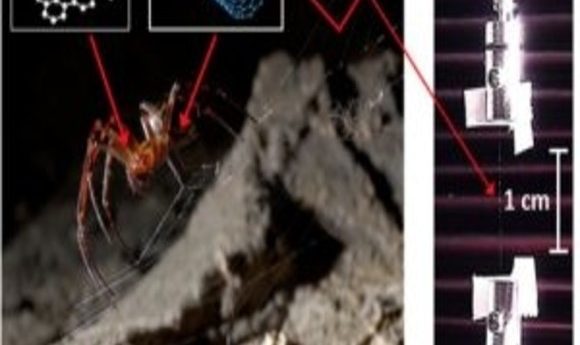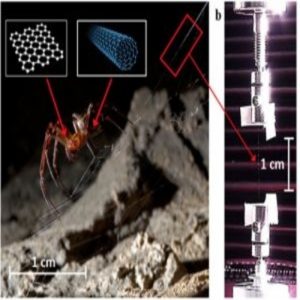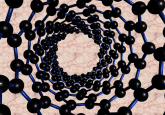The (spider) silk road to strength

While a spider skulking in the shower may send some people’s adrenaline off the charts, the materials it produces are going from strength to strength in the laboratory.

Graphene and carbon nanotubes were incorporated into the silk spun by spiders (1).
Whether they’re lurking in the lounge or spinning webs in your bathtub, spiders are a common companion in most households—despite many recoiling in fear when confronted by an arachnid. Some researchers have had to overcome their arachnophobia, however, since spiders lend a helping hand across a spectrum of research fields from neuroinflammation to identifying new colors.
Spider silk often makes headlines due to its beneficial properties, with recent research promoting its potential for regenerative medicine, microscopy, and cell biology. “The strength, flexibility, and durability of spider silk makes it an incredibly attractive material to work with; the tensile strength is comparable to that of steel,” said Nicola Pugno from the University of Trento in Italy. “Spiders’ short life cycles and the ease of keeping them in a lab also make them an attractive model organism.”
Writing in 2D Materials, Pugno and his colleagues detail their plans to take spider silk to the next level by adding carbon allotropes such as graphene or carbon nanotubes to create a super-strong end product (1). The researchers hope this will herald in a new era of “bionicomposite materials,” where natural products are combined with man-made materials, with spiders at the forefront.
Taking inspiration from nature when designing products is not novel; for example, the sticky feet of the gecko are regularly drawn upon when designing and researching adhesives. “Like many other researchers, I realized that nature creates impressive materials and finds solutions for problems that we struggle with as humans and engineers,” said Pugno.
Pugno and his team decided to tweak spider silk by adding nanotubes that have a tensile strength approximately 100 times greater than steel. They selected 21 spiders from 3 species and fed them solutions containing graphene and carbon nanotubes.
When the team tested the tensile strength and toughness of the silk made by these spiders, they found that some silks underperformed, but most excelled—especially those made by spiders fed with carbon nanotubes. The fibers created by these spiders were up to 3 times the strength and 10 times the toughness of regular spider silk.
While it seems likely that the addition of carbon allotropes led to increased strength and toughness, there is currently no direct evidence for how spiders may have incorporated these compounds into their silk. “Interdisciplinary research between material engineers and biologists using spiders is the way forward,” Pugno said.



